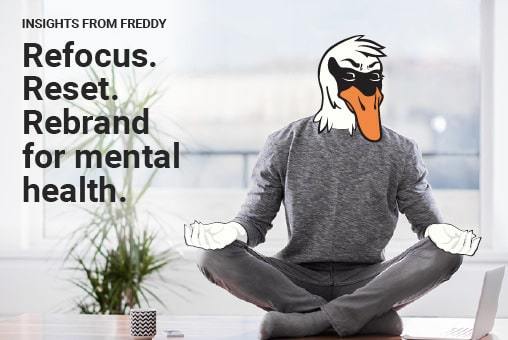
Keep your brand in step with the mental wellness movement.
Although “mental hygiene” was first coined in the mid-19th century by William Sweetser, it’s taken decades for the term “mental health” to enter everyday colloquialism. In fact, it’s taken several decades and several hundred studies to bring us to 1949 when May was officially dubbed National Mental Health Month. While this was a huge step in general awareness, today’s generation is responsible for the movement that celebrates and weaves this balance into our daily lives. So much so, that the average consumer now demands that brands also make it more of a priority. The pandemic changed almost every aspect of the industry, especially the way we approach, support and market mental health.
The more people stayed in, the more they looked within.
One of the great things to come out of the pandemic was its spotlight on mental health reform. Many – normally too swamped by the daily grind for self-reflection – were forced to reevaluate their relationships with themselves. Others, perhaps connected but hanging on by a thread, finally found the time to pause and hit reset. As the general public faced a pandemic outside, on the inside, they were discovering what self-care meant to them.
Perhaps a calm morning walk offsets a busy afternoon. Or maybe folding laundry while on Zoom brings greater work-life balance. While these small steps led to a greater impact for some consumers, others were left wanting. For more advanced help, where and how they sought care became a question of accessibility. First, Dr. Google and TikTok Therapy become their defacto first levels of self-diagnosis. When that didn’t quite fill the void, it was onto a well-advertised therapy app. But what if they needed prescribed medication? Is that when you talk to your primary care doctor about your wellness journey? As these questions rattle around in the minds of consumers, the answer is clear: they are looking to healthcare providers for more easily accessible services and support in ways that are just as useful as they are successful.
Here’s how healthcare organizations can make mental health a priority:
A few key marketing takeaways:
There are many ways your healthcare brand can play a role in providing better mental health support, especially regarding marketing. Avoid negative terms and trigger words like “surviving”, “coping” or “struggling”. Don’t overpromise “happy”. For most, mental health is a journey, not a quick fix. Instead, position your brand as a resource of knowledge and support. One filled with solutions that will empower each consumer and evoke acceptance in everyone who sees your ads.
Healthcare includes all aspects of the mind, body and spirit. Let us help you define your brand’s role in the mental health space, stay relevant and meet consumers where they are now.
 Freddy Swan
Freddy Swan
The original version of this page was published at: https://frederickswanston.com/refocus-reset-rebrand-for-mental-health/
Frederick Swanston is a full-service advertising agency with capabilities in creative, brand development, media strategy and placement, web development, interactive, direct marketing and research.
Step up the originality.In a crowded healthcare marketplace, break free from the crowd with originality and creativity.Raise your hand if you’ve ever been in a meeting and someone ...read more
How COVID-19 has helped create a more human healthcare experience.For all of us, it seems the past 1.5 years have changed everything. COVID-19 devastated and disrupted our lives – ...read more
Remember the story you told at your in-laws’ Thanksgiving dinner table that ended in awkward silence and a scowl from grandma? We’ve all been there. Yet, somehow, when ...read more
With an estimated spending power of $143 billion per year, Generation Z (aka Gen Z) accounted for approximately 40% of global consumers in 2020.1 Which got us thinking … how ...read more